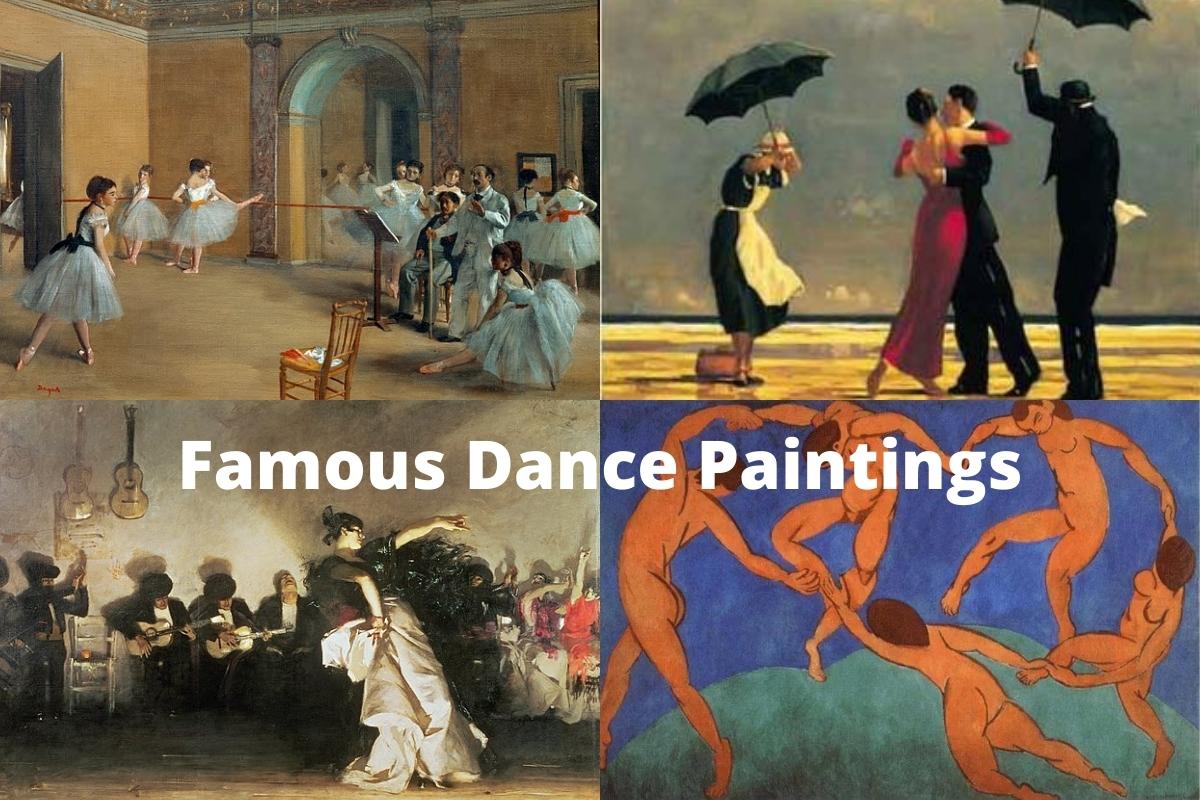Dance may be classified and characterized based on its choreography, movement repertory, or historical time or location of origin.
Artists have utilized dance paintings to represent the human body in one of its most expressive forms of motion.
With his series of artworks devoted to dancing, one artist stands above all others, and that artist is Edgar Degas.
Degas’ ballerinas are still among the most popular images in nineteenth-century painting.
Many other painters (mostly French) have employed dance as a key topic, but Degas will be remembered the most.
Below is a list of some of the most famous dance paintings ever produced the majority of which were greated in the 19th century.
Famous Dance Paintings
1. Dance at Bougival – Pierre-Auguste Renoir
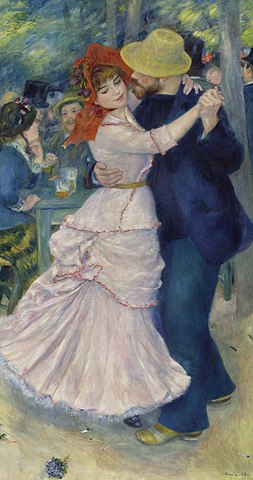
Pierre-Auguste Renoir’s 1883 painting Dance at Bougival is now in the collection of the Museum of Fine Arts in Boston, Massachusetts, USA. It is one of three pieces in a set commissioned by Paul Durand-Ruel and is described as “one of the museum’s most cherished paintings.”
It portrays a scene in the French town of Bougival, about 15 kilometers from Paris’s central business district, a location frequented by other Impressionists in addition to Renoir, including Claude Monet, Alfred Sisley, and Berthe Morisot.
Two dancers are seen in the picture, surrounded by a bustling scene of café patrons. Although the painting’s themes are debatable, it is widely renowned for giving the feeling that they are moving, creating the illusion that the observer is truly there.
Renoir’s palette was mostly pastel, although he inserted a more bright color in the head-wear of both figures. The wider collection of paintings to which this one belongs is said to represent Renoir’s last step into Impressionism, and it exhibits his creative talent developing from his previous works.
2. The Dancing Class – Edgar Degas
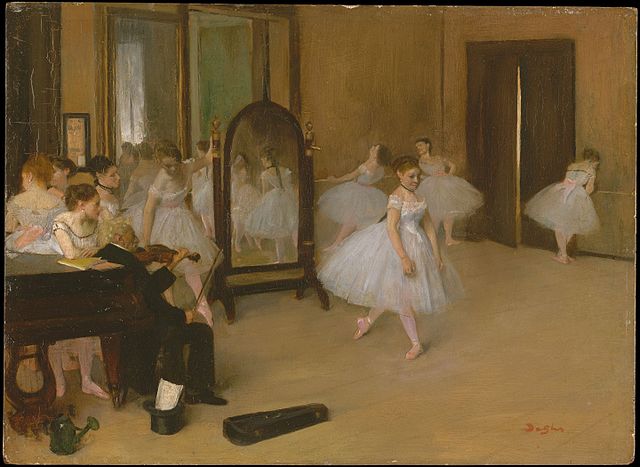
The Dancing Class is an 1870 oil painting by Edgar Degas. It was his first ballet photograph. It displays a Paris Opéra dancing lesson.
Degas did not yet have backstage access to the Opéra when he produced this painting. Degas said in the late 1870s, “I have done [painted] so many of these dancing inspections without seeing them that I am a bit embarrassed.”
The dancer in the middle of the image is Joséphine Gaujelin (or Gozelin). She awaits the ballet master’s cue to begin.
Also Read: Famous Music Paintings
The watering can (used to dampen the rosin on the floor), the top hat used to carry the music, and the empty violin box are all props that Degas continued to utilize in his ballet paintings. Degas re-used the poses in this painting several times.
3. Bal du moulin de la Galette – Pierre-Auguste Renoir
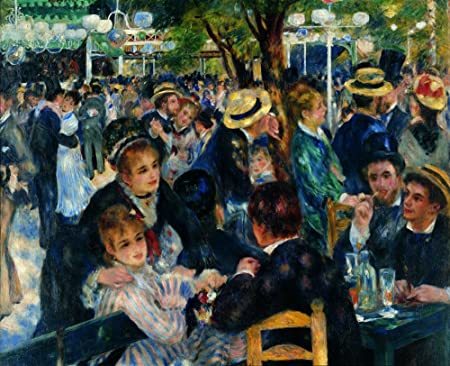
Few French painters achieved the kind of renown attained by Pierre Auguste Renoir. His picture titled Dance at Le Moulin de la Galette has long been considered as a masterpiece of the Impressionist art movement by art experts and aficionados.
The artwork was completed in 1876 and depicts a typical summer Sunday afternoon in Paris at the time.
On Sunday afternoons, many local inhabitants would congregate at the Moulin de la Galette, which was close to Renoir’s house, to enjoy the neighboring cafés and dancing in the courtyard.
Renoir’s work is renowned for his amazing ability to capture the vibrant mood, as well as his remarkable ability to depict the many ways in which sunlight peeks through the trees onto the dancing lovers below.
This piece has long been regarded as one of the greatest examples of Renoir’s daily scene paintings.
4. Dance – Henri Matisse

Easily recognizable as one of the most famous works of modern art, Henri Matisse’s Dance is renowned for its creative flavor as well as the contentious manner in which it was created.
The French art establishment first reacted negatively to Dance, owing to its rudimentary nature and the use of just three hues, which was characteristic of the Fauvist movement.
This picture, commissioned and completed in 1910 for a rich Russian collector, depicts a circle of naked individuals dancing hand-in-hand against a dark blue and green backdrop.
Also Read: Famous Henri Matisse Paintings
The painting was chastised for its crude quality, and Matisse came under fire from many members of the art world with this piece.
Many art aficionados, however, like the piece for its unusual amount of color depth, since the dancing people are all rendered in a reddish hue, while the ground is rendered in a solid green hue and juxtaposed against a darkening sky.
5. The Dance Foyer at the Opera on the rue Le Peletier – Edgar Degas
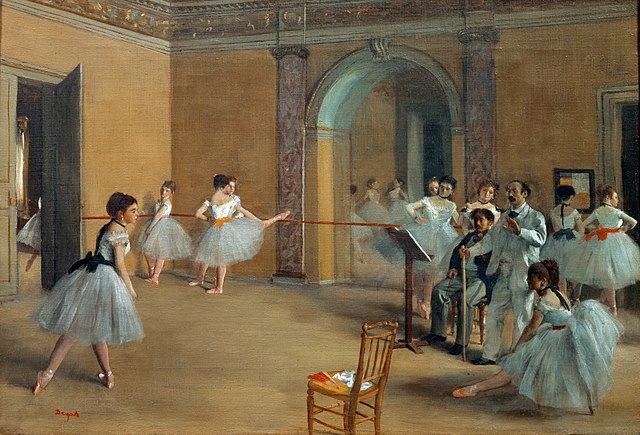
Degas began painting dance motifs in earnest about 1870. He began by painting a series of ballet practice images.
In the big hall of the Opera Foyer on Rue Le Peletier, eleven ballerinas are being evaluated. The white-clad Louis François Mérante, the opera house’s teacher, is issuing commands to the dancers.
Also Read: Famous Degas Paintings
Those who aren’t exercising are paying careful attention to the dancer who is presently being checked. The work is structured around the dichotomy of the group and the solo person.
The image has a defined energy center in the unoccupied chair in the front, which is notable for the rigor of its composition.
Degas utilized the same ballerinas in several of his works. In the monochrome Ballet Rehearsal on Stage (1874, Musee d’Orsay), the dancer in the center of the image with the green ribbon, who is being scrutinized by the ballet-master, also appears.
6. Oberon, Titania and Puck with Fairies Dancing – William Blake
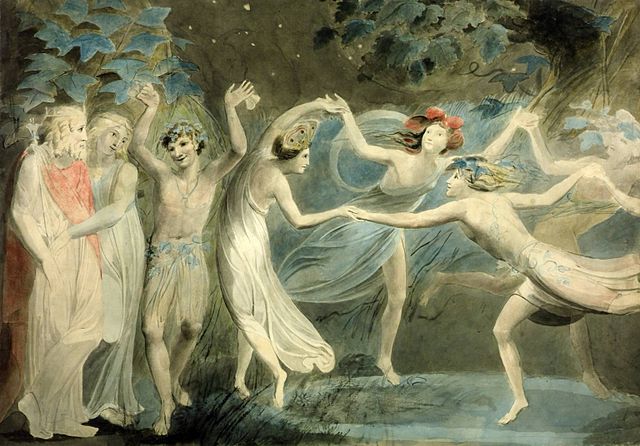
Oberon, Titania, and Puck from A Midsummer Night’s Dream are shown with a train of dancing fairies in a wooded setting in this dreamy watercolor by poet and painter William Blake.
The fairies form a ring and dance it, evoking old English folk dances linked with midsummer and May Day celebrations.
The fairies’ King and Queen, Oberon and Titania, are on the left. Puck, the mortal perplexer, is before us. Moth and Peaseblossom are clearly recognized fairies.
Shakespeare pictures were more popular in the 1780s. In 1784, Blake founded a print-publishing partnership. If the work’s estimated date is true, it may be Blake’s effort to enter into this market.
7. At the Moulin Rouge, The Dance – Henri de Toulouse-Lautrec
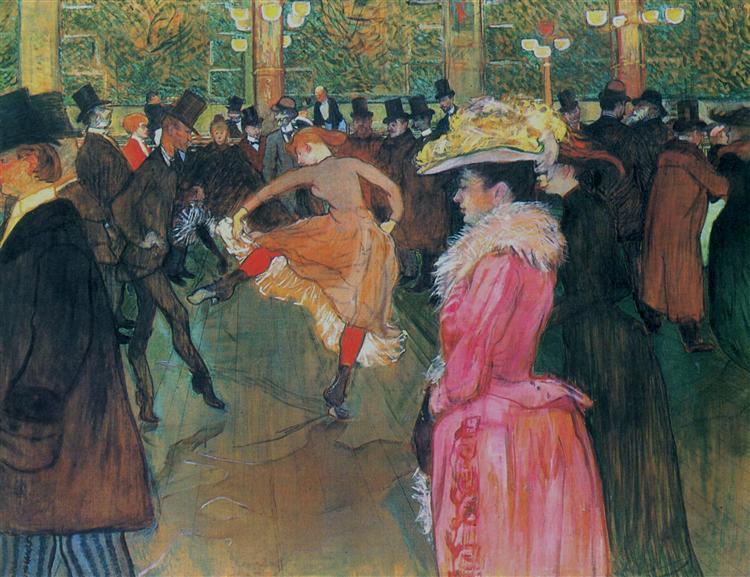
The Dance at the Moulin Rouge is an oil on canvas painting by Henri de Toulouse-Lautrec. It was created in 1890 and is the second of Toulouse-graphic Lautrec’s paintings representing the Moulin Rouge cabaret, which opened in Paris in 1889.
It depicts two dancers doing the can-can in the midst of a bustling dance hall. On the back of the artwork, a previously found inscription by Toulouse-Lautrec reads: “The education of the new ones by Valentine the Boneless.” This suggests that the guy to the left of the dancing lady is Valentin le désossé, a well-known dancer at the Moulin Rouge who is now instructing the cabaret’s newest member.
To the right is a strange pink-clad aristocratic lady. Numerous aristocratic figures appear in the backdrop, including poet Edward Yeats, the club owner, and even Toulouse-father.
8. Artist’s Studio “The Dance” – Roy Lichtenstein
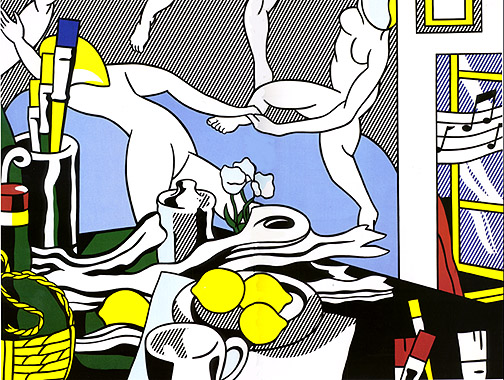
Artist’s Studio ‘The Dance,’ 1974, by Roy Lichtenstein, is a clear reference to Matisse’s masterwork The Dance, 1909, and emulates its warped perspective.
Lichtenstein’s work effectively interprets Matisse’s work as a popular culture cartoon. It’s simply a spoof of Matisse’s previous picture.
‘The Artist’s Studio’ is his reinterpretation of Matisse’s ‘Still Life.’ Coffee cups, paint brushes, and other trash that one could find in the studio replace the flower containers.
The mechanical techniques employed in mass manufacturing of visual media, such as the usage of Ben-Day dots to symbolize particular hues, are utilized in Lichtenstein’s painting.
Was his choice of this ‘commercial’ approach a further statement on the influence of ‘mechanical reproduction’ on visual culture?
9. El Jaleo – John Singer Sargent
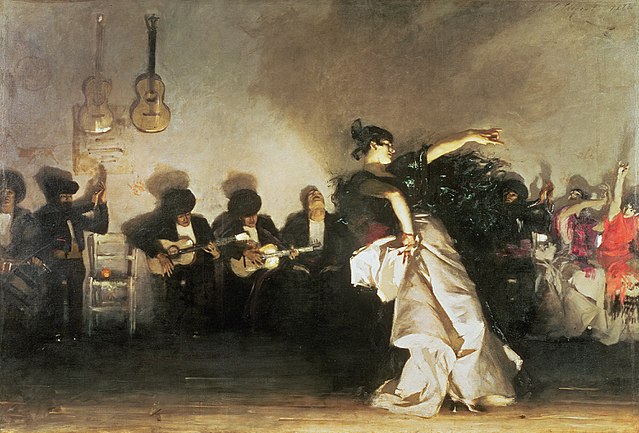
John Singer Sargent’s large artwork El Jaleo depicts a Spanish Gypsy dancer dancing to the accompaniment of musicians. It was painted in 1882 and is now on display in Boston’s Isabella Stewart Gardner Museum.
The picture was inspired by Sargent’s five-month journey to Spain and North Africa in 1879, which also resulted in the creation of a smaller oil painting, The Spanish Dance (Hispanic Society of America).
The picture is chronologically and thematically connected to a sequence of works painted by Sargent during a later visit in Venice; they, too, include dramatic light effects, exotic models, and restrained colors.
Impressed by the costumes and theatricality of Gypsy dancing, the artist went to Paris and started work on a massive painting like a stage. El Jaleo relates to both the general definition of jaleo, a commotion, and the specialized dance known as jaleo de jerez.
10. The Singing Butler – Jack Vettriano
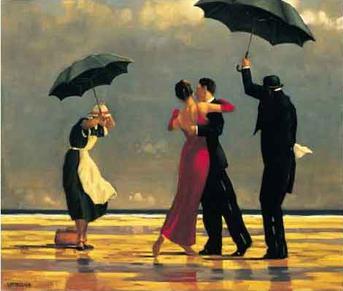
Scottish artist Jack Vettriano created The Singing Butler in 1992 as an oil-on-canvas painting. The original sold for £4,500 in 1992, and was sold for £744,800 at auction in 2004, setting a new record for any Scottish artwork and any picture ever sold in Scotland at the time.
The Singing Butler is the best-selling art print in the UK, with over a million replicas now adorning couches and dining-room tables; the picture also appears on calendars and jigsaw puzzles, earning Vettriano £500,000 in royalties each year.
On a beach in Fife, a nicely dressed man and lady are dancing inexplicably. Very far, everything has been so lovely. But take a look at the unfortunate maid and butler, who are windy, stooped over, and fighting to keep their umbrellas in place. Sir and Madam are completely unaware.

